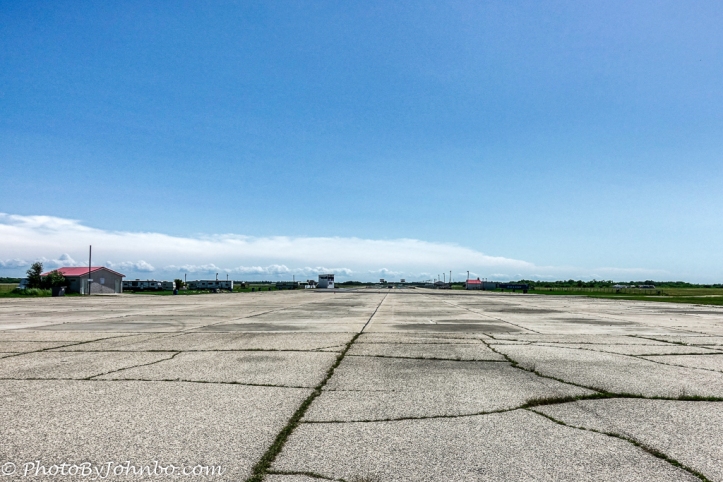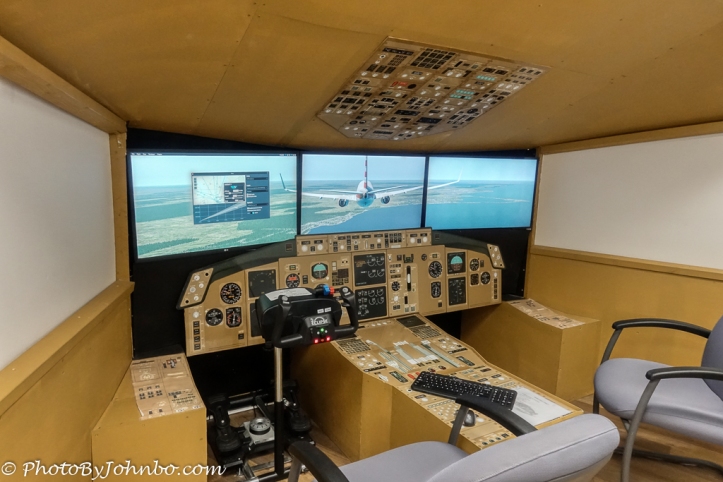My wife, Lynn, and I were brought to Gimli, a small resort village on the shore of Lake Winnipeg, to visit the Air Cadet League glider training facility. After a morning visit to the training facility and a great lunch on base courtesy of the Air Cadet League of Manitoba, our host, Vern, took us on a tour of the resort community. You can read more about our visit with the folks at the Air Cadet League, Manitoba here.
The village has only about 6000 residents but swells with vacationers in the mild Canadian summer. Founded by Icelandic settlers in the 1870s, the community is located about 50 miles (80 km) from Winnipeg. Our first stop was along the lake shore at Viking Park where a large statue of a Viking proclaims the Icelandic heritage.
 Behind Viking Park a large marina beckons boaters onto one of Canada’s largest lakes. Lake Winnipeg is the sixth largest freshwater lake in Canada and the 11th largest freshwater lake on Earth. In other words, it’s BIG! I would have loved to fly my drone above the marina and get a grander view of the lake, but alas, I am not licensed to fly my drone in Canada.
Behind Viking Park a large marina beckons boaters onto one of Canada’s largest lakes. Lake Winnipeg is the sixth largest freshwater lake in Canada and the 11th largest freshwater lake on Earth. In other words, it’s BIG! I would have loved to fly my drone above the marina and get a grander view of the lake, but alas, I am not licensed to fly my drone in Canada.
 All of the history and geology of the area is interesting, but what really put Gimli in the annals of aviation history happened on July 23, 1983. The combination of new aircraft design and the newly adopted metric system in Canada conspired to create an incident that could have been a major aviation accident if it were not for the skills of the flight crew and a pilot who knew how to fly a glider.
All of the history and geology of the area is interesting, but what really put Gimli in the annals of aviation history happened on July 23, 1983. The combination of new aircraft design and the newly adopted metric system in Canada conspired to create an incident that could have been a major aviation accident if it were not for the skills of the flight crew and a pilot who knew how to fly a glider.
Airlines measure fuel load by weight (pounds/kilograms) rather than volume (gallons/liters) because weight is more important than physical space when it comes to determining fuel load. Jet fuel weighs almost 7 lbs per gallon (3 kg), and the newly delivered Boeing 767 can carry 23,980 gallons (90,770 l) of fuel. All that weight isn’t efficient to carry when it isn’t needed. Besides, it’s better to carry “live weight” (passengers and cargo) rather than “dead weight” (fuel that won’t be needed.) Consequently airliners fuel only enough to reach their destination plus a carefully calculated reserve amount in case of flight delays or reroutings by weather or air traffic control.
On that fateful day, Air Canada flight 143 was loading passengers at Montreal, destined for Edmonton. The new aircraft, recently delivered to the airline and the new procedure of calculating fuel load by kilograms instead of pounds, along with a combination of other factors, ended up short fueling the jet which would carry 61 passengers and 8 crew.
About half way to Edmonton, the crew knew there was a fuel issue, but at first attributed it to faulty warning systems. At 41,000 feet (12,500 m) and east of Winnipeg, the Boeing 767 ran out of fuel. Calculations determined after measuring glide and descent rate, that the aircraft would not make it to Winnipeg. However, there was the closed Canadian Air Force Base at Gimli that was within range of their glide. The base runways were being used as a dragstrip and that day, a meet was underway.
 Looking from the west end of the runway at Gimli today, the drag strip is much better equipped than it was in 1983. Fortunately by the time the silent running aircraft was ready to land, there were only a few people left on the dragstrip. The pilot expertly landed the 115 ton aircraft on the runway, but the landing without power was hard and it buckled the nosewheel assembly.
Looking from the west end of the runway at Gimli today, the drag strip is much better equipped than it was in 1983. Fortunately by the time the silent running aircraft was ready to land, there were only a few people left on the dragstrip. The pilot expertly landed the 115 ton aircraft on the runway, but the landing without power was hard and it buckled the nosewheel assembly.
 A photo on display at the Gimli Glider Exhibit shows the view of the aircraft on the runway with the nose of the aircraft on the ground. There were no injuries on the landing but as is typical, there were 10 minor injuries as passengers used the slides to leave the aircraft.
A photo on display at the Gimli Glider Exhibit shows the view of the aircraft on the runway with the nose of the aircraft on the ground. There were no injuries on the landing but as is typical, there were 10 minor injuries as passengers used the slides to leave the aircraft.
 Visitors to the exhibit can take their chances at a flight simulator that puts them in the pilot’s seat attempting to glide the giant aircraft from a point over Lake Winnipeg to a (hopefully) safe landing on the air base runway. No, I didn’t try it. I’ll save that for another visit.
Visitors to the exhibit can take their chances at a flight simulator that puts them in the pilot’s seat attempting to glide the giant aircraft from a point over Lake Winnipeg to a (hopefully) safe landing on the air base runway. No, I didn’t try it. I’ll save that for another visit.
One of the most interesting parts of the visit is a short video that describes the incident and the factors that led to the loss of fuel and subsequent safe landing. The aircraft was eventually repaired enough to be flown off the base. It landed at Winnipeg’s airport to undergo repairs for a complete restoration to service. The aircraft returned to daily airline service and the manager on duty at the exhibit was one of the pilots who flew this particular aircraft on a regular rotating basis.
Their hours are seasonal and admission cost is a reasonable $7 (Canadian dollars) or less. You can see their current hours and get contact and admission information here. Aviation enthusiasts will certainly find the trip from Winnipeg to visit the exhibit and relive a piece of aviation folklore a worthwhile way to spend an afternoon.
John Steiner


Very cool, sir!
Thank you! The Gimli Glider is one of the great stories in aviation lore.
I swear John, you have the most interesting stories! Never heard about this. What a hero that pilot was!
I was truly excited when I learned I would be visiting Gimli. It was a bonus to learn of the museum!
I grew up in Winnioeg but didn’t know any of this. Thanks for posting this!, Maggie
Thanks for stopping by and commenting! I will be back in Winnipeg again,
Wow. What a story and event. Not many like that have a ‘happy’ ending. Woof.
Indeed!
Quite a gripping story !📖
And the flight simulator seems so fun. Thankyou for sharing this amazing piece of information🤓
Stay safe and stay blessed☺
-theinkwarrior
Thank you for taking the time to read and comment.
We have shown our genuine appreciation towards your content. Thanks for being our positive inspiration and as we celebrate Happier You’s first birthday… We can’t miss you out of the guest list. 🤗Come Celebrate with us🥳 :
http://happieryou.home.blog/2020/03/22/happier-you%e2%9d%a4-turns-1-%e2%9c%a8%f0%9f%8e%82-the-happiness-party%f0%9f%92%9b/
With love and anticipation❤️,
theinkwarrior